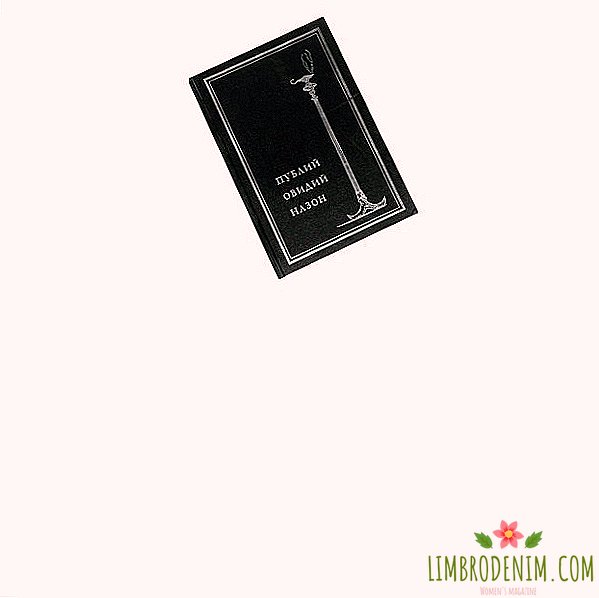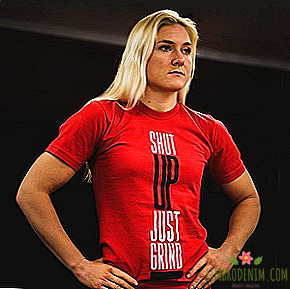Hypersize: Fashion for those who are not important clothing size
Body and fashion have always been connected. Actual at different times, the silhouette spoke of current views on the ideal figure of a person. At the same time, different epochs, be it the 17th century or the 1980s, could boast their lotions, from corsets to special pads, with the help of which they intentionally changed the outlines of the body. Of course, to meet the standards of time.

Even today, in the era of comfortable casual wear, the shape, proportions and size of things continue this dialogue between public and personal body perception. I must say that over the past ten years we have gone through different norms. Slim-bow came to replace the "haggard" figures with protruding clavicles and skinny-onions, emphasizing sports forms, and also fashion headed for the androgynous universal oversight. Now this series has added things hypersay volumes up to XXXL. Why does clothing size no longer matter? Where did the fashion come from to wear things of gigantic, almost monstrous volumes?
Most vividly the change of silhouettes of the last ten years is illustrated by the fashion for popular casual jeans. So, skinny mom has replaced the skinny, and now mom is being squeezed out by dad-jeans, which resonate perfectly with the “father's body” insanity: very, very large and spacious. Gap supported the trend and released dad shorts this year, but for now Rihanna posed for huge “bottomless” Martine Rose jeans for i-D magazine, The Guardian talked about dadcore. This, of course, is not only about jeans. These are bulky coats, jackets, shirts, hoodies, bombers, T-shirts, turtlenecks and other things two to three sizes larger, as if from the wardrobe of a father with the figure of a man who loves pizza and beer bars. The Guardian, comparing things of size XXL with the wardrobe of the father, try not to hurt the feelings of stout people. Although, if you face the truth and have a bit of irony, the fashion for large-sized clothes, in fact, is an attempt to change into things for the full.


Clothing - a kind of boundary between the inner and outer. The desire to "dissolve" in clothes, wrap yourself in something that completely hides you from the external environment, is due to the aggressive environment in which we live and our vulnerability. Many in childhood wore the clothes of their elder brothers and sisters, or at least tried on the large clothes of their parents. At that moment we didn’t care that some parts of the body were stressed, opened or closed. The main thing was the feeling of comfort, comfort and security, which gave clothing of large sizes. However, the adult is no stranger to the need for "armor." A hypersize is when you feel like you're in a house, just from things. Remember the fortress of a blanket in childhood. Armor of items - this is a pure hypersize.
Daria Nuclear, a British design school teacher, also explains the tendency to hypersize the desire to wrap up, defend herself, defend herself, and therefore hide the contours of her body. She explains the relevance of the fact that the figure has become an important criterion of success in society, career, personal life, and the cult of appearance - dominant. The denial of sexism, the role of appearance as an indicator of success and a steel character (after all, sports and diets require a lot of willpower, as opposed to a relaxed desire not to indulge in pleasures), according to Nuclear, leads to the desire to buy huge things and hide in them, as well as to find comfort in a loose fit.


Anna Lebsak-Kleimans, director of analytical and consulting agency Fashion Consulting Group, continues this thought and speaks about the impact of the Internet and social networks, which undermine the inner state of a person. “Despite access to social media, we are increasingly feeling lonely and detached, and our self-criticism is growing. Hence the need to build a wall between ourselves and the“ noisy and chaotic surrounding world ”, between outside aggression and silence inside, between our own, protected and inaccessible to strangers and the rest of the world. The need is expressed in the fact that a person creates himself like a cocoon of clothes, inside of which there is a feeling of comfort, silence and security. These are layering, voluminous forms, elongated sleeves and pants, exaggerated dimensions, drape Acquiring soft textures of fabrics, natural palettes and fibers, "says Lebsak-Kleimans.
Something similar has already happened with fashion in the 80s, but at the level of youth subcultures. It is not in vain that hyper-volume pants and sweatpants from 2015 evoke wide-fitting jeans jeans and T-shirts to the knee of hip-hopers who wear their fathers and brothers' clothes. Another prime example of the hypersize is British late-80s acid raiders, who wore giant jeans, hoodies, XXL T-shirts, and hats and sweated in this bulky clothing until dawn. The massiveness and volumetric cut of a business dress code of the 80s signaled the authoritativeness and self-confidence of a jacket owner with exaggerated shoulders or a cocoon coat. Such models were offered by many designers, from John Galliano and Giorgio Armani to Issei Miyake and Betsy Johnson, and they were worn by both men and women.
The aesthetics of super-volumetric things were developed in the late 90s - early 2000s in the men's collections of Raf Simons and Drys van Notein, although, in fact, they appealed to the same subcultures and style of the 80s. For example, in 2005, Simons proposed wearing huge pants in a pair with equally huge shortened jackets and coats. At that time, Style.com wrote that this collection is the fashion of the future, the characteristic ideas of the designer, which took a radical new form.


However, Asian designers are working most clearly with the deformation of clothes to monstrous shapes. Take at least the collection of Rei Kawakubo from different periods or modern works of the young brand Ximon Lee, showing dimensionless pants and unisexual sweatshirts. The demand for "monstrosise" in the Asian market is due to the same burden of protection from an even more aggressive, high-tech and emotionally restrained environment, as well as the frequent desire of the Japanese, who by nature are fragile and thin, to try on an alien massive form.
Baggy massive things are presented mainly in men's collections - this is confirmed by the lookbooks of Tigran Avetisyan, Martine Rose and Craig Green and the season autumn-winter - 2015 Hood By Air. However, gradually hypersize penetrates into women. Jacquemus, Rag & Bone, Off-White and Lemaire feature baggy trousers, bulky coats, jackets and loose turtlenecks. Undercover and Steven Alan are almost XXL bomber pants and trousers. MM6 Maison Margiela and Ports 1961 - spacious jeans, t-shirts and tops. Brand Y / PROJECT - voluminous trench coats paired with heavy boots and loose trousers. Separately, you can say about the brand Vetements. It seems that with their spring-summer and autumn-winter collections of this year they have finally made exaggeratedly large forms ultrafashionable.

The idea of a hypersize is to wear loose, comfortable, unrestrained things that are almost monstrous in size without fear of being condemned because you look like a giant shapeless mass. And here the trend denotes painful points. The first is an acute negative public reaction to massive things on a girl paired with the fear of wearing something not on the figure imposed by society. After all, following the patriarchal discourse, the girl should have a cool figure and emphasize it, but the man is not at all charged with physical beauty and smartness, and therefore he can hide his body in every possible way with clothes. Hence the limitations in the cut and size of the grid in women's clothing departments: in search of large items, you have to go to the men's department or to specialty stores.
Meanwhile, all the figures are unique, and the opportunity to try on clothes with completely different emotional charge gives a lot more chances to explore and understand yourself. In addition, very few people really know what their body looks like in volume, and as a result we often underestimate or overestimate our size. If everyone had the opportunity to create their own 3D-model and look at their body from the side, we would learn a lot about ourselves. In the meantime, the main thing is to understand and accept that the figure - be it large or miniature, slim or puffy - does not oblige anyone to wear only certain things.





